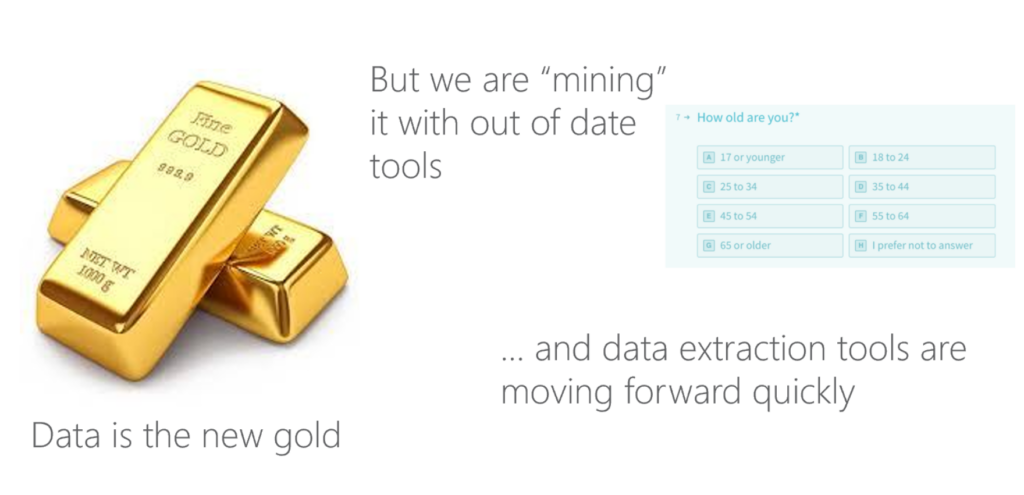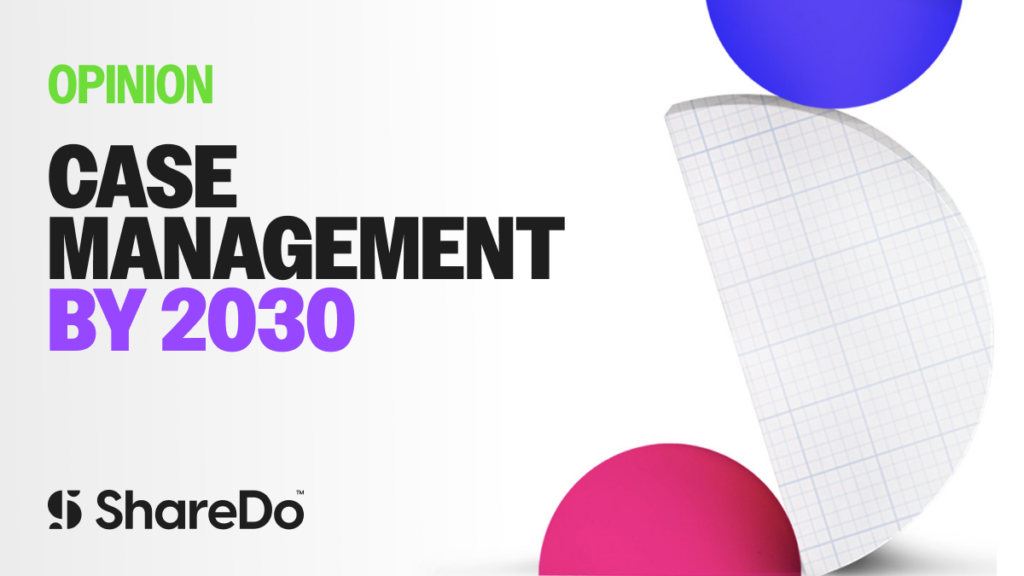Introduction
The average lifespan of a case management system is 10 years.
This article explores some of the themes that are either emerging now or are likely to emerge over the next 5-10 years and takes a brief look at what a Case and Matter management system might look like in 10 years’ time.
10 years carries significance for a couple of reasons:
Agricultural Age: 4000 – 1700 AD
Industrial Age: 1700 AD – 1960 AD
Information Age: 1960 AD – 2030 AD
Knowledge Age: 2030 AD – ???
Firstly it’s the end of what a lot of people call the information age and the start of the next age which is called a variety of things such as Knowledge, Reckoning or the like.
Learning CMS Systems
Workflow by Example
So the CMS of 2030 will I believe address one of my personal pet hates; the process of converting process maps into workflow systems.
Like many business analysts I’ve spent a good chunk of my career analysing a mountain of process maps… and then spent another good chunk of my career converting them into workflow models.
Now there are a number of problems to this approach
- Firstly it takes a lot of time … things get lost in translation .. processes change in the time it takes us to implement them
- Secondly people don’t fundamentally follow process charts
Our CMS of 2030 will learn these by observation and suggest the optimum “standardised processes”. This in turn will significantly reduce the effort that is required to implement these sort of processes. Likewise by designing more and more processes around adaptive case management methods users will be given more and more freedom to quickly step outside of the process.
Data Driven Decisions
So whilst solving the workflow problem is a reasonable sized problem to address the same techniques will also be applied to other similar questions. And hence the CMS of 2030 will enable us to quickly answer questions such as:
- “How long will this case take?”
- “How much will this case cost?”
The net result is that we will be more accurate in the management of ad-hoc work and much of the “routine” will be implemented from case processes.
Addressing information overload
Both in our day to day life and our business life we are bombarded by information… and everyone’s information is always more important than others!
A case or matter management system is no different and users can quickly be overloaded by “noise”. They become desensitised to it and the information becomes worthless.
Today we allow user to change the frequency of these notifications. So for example they can “turn down the noise” to only receive approval notifications once a week.
But the CMS of 2030 will solve these problems, understand the concept of “pertinent information” and hence the information we receive will become meaningful rather than noise to be ignored.
[Editor note: whilst this is a conceptually easy problem to understand its significantly harder to solve!]
Designing for People and Machines
Case Management systems collect a huge amount of complex structured and structured information .. Information that through its sheer volumes can again become “overloaded”.
So we’re pretty proud of our Case Management UX at Sharedo – its designed for people to complete ad-hoc workflows as they go through their journeys (we call these “blades”).
That said from a product perspective we consider ourselves part way through the journey from a traditional GUI to what is termed a NUI or Natural User Interface.
However I’m equally certain that the UX of the CMS of 2030 is going to change significantly even from where ShareDo is today. Analysts talk about the next evolution beyond NUI as being Organic User Interfaces … personally I’m slightly cynical as to whether the bulk of case handlers will be wearing VR headsets and manipulating files in a 3 dimensional space in 10 years but I could well be wrong.
That said I do think what we will start seeing is the integration of chat bots together with almost a retro “command line interface” into case systems.
We’re starting to experiment with similar styles of interaction to that seen in applications like slack.
In this world the primary case view would be your case history and from there you will be able to perform any action quickly.
This is an interface that we will gradually start to see evolving into a more natural language style of UX.
As the desire to automate more and more activities progresses so will the need increased need for case systems to also be designed to be machine centric.
In common with most modern case and matter management applications we design ShareDo API First.
API First essentially means two things:
- We start by designing the API by which data and behaviour can be consumed.
- And then layer on any required user interface components
What this means in practice is that every single interaction that can be completed through the UI can also be completed via a machine to machine call; whether that is configuring a document or entering matter data.

Saying goodbye to valueless data entry

I think we have all done a reasonable large amount of valueless data entry in our careers to date.… and as someone who has spent a considerable time designing complex data entry forms I am only too aware of:
- how much of this data is duplicated
- how little the majority of users care about this “gold”
- … and hence how the existing model for data entry is currently far from optimal
So whilst we move towards more machine to machine CMS integration much of this effort will be eased, the CMS of 2030 will be significantly more sophisticated in the way in which it extracts data from textual documents using sentiment style analysis. For example we will take information from the likes of medical reports and turn these into structured data more easily.
Today we are broadly solving these challenges using:
- Brute force algorithms that require a huge amount of time and data to train
- Or by throwing cheap resource at the problem
- Or indeed deploying an army of python developers etc
The CMS of 2030 will be deploying entirely more sophisticated algorithms at this problem set and hence reduce “valueless data entry”
Automating the activity not the role
As we squeeze the last few drops out of big data and lean six sigma…we will be automating the activity (but not the role!)


So over the course of the next 10 years we will be gradually be removing friction and non value added activities from human involvement with our CMS.
There is a quote from someone at the London Business school that describes this process as, and I paraphrase, as “… squeezing the last drops of juice from the oranges that are Lean Six Sigma and Big Data.”
And hence for many processes using our CMS of 2030 our job will be to manage transactions by exception.
But for the majority of processes; using the CMS of 2030 will make I believe the working life of our users a much more positive thing. With the CMS removing much of the “mundane” we can focus on being more human which has to be a good thing.





